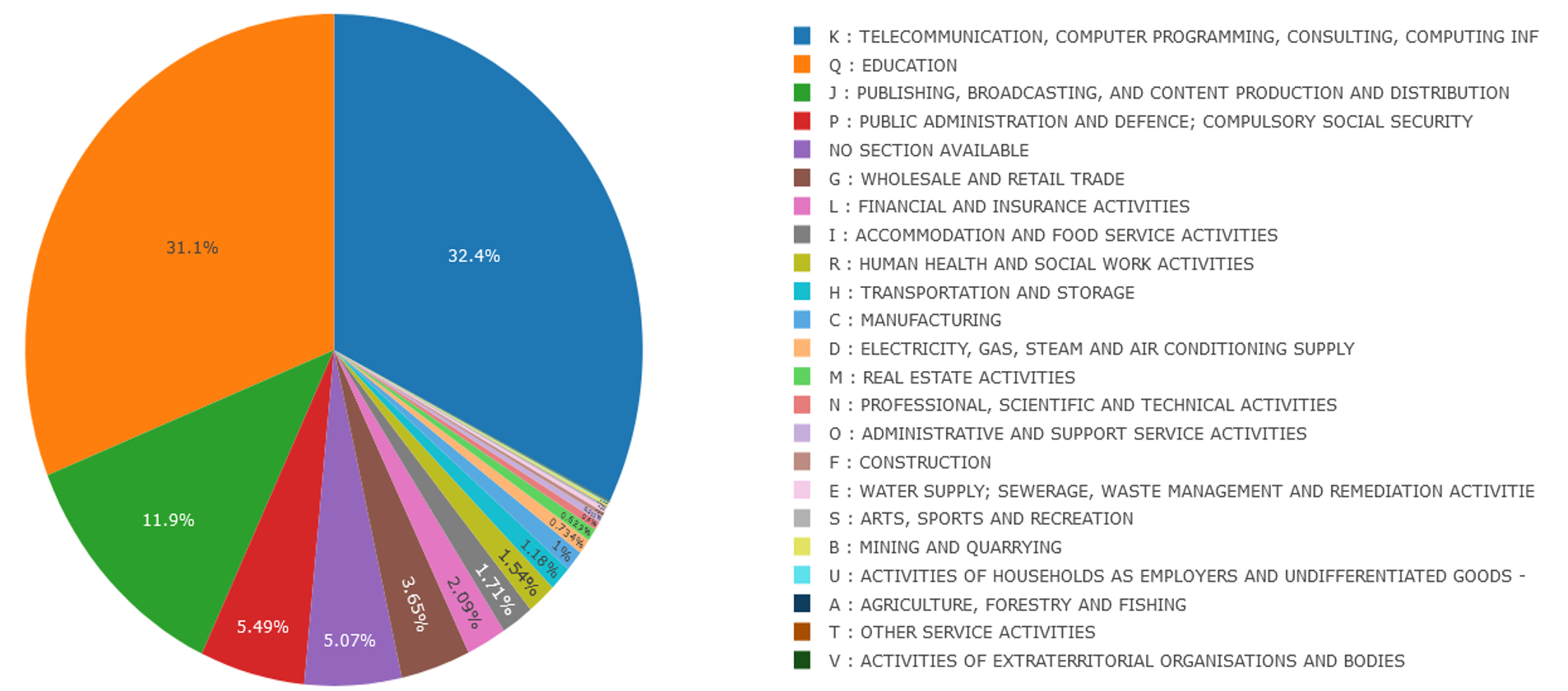From Access to Impact: Exploring the Role of French Open Science Platforms in Measuring Societal Change

By Simon Apartis & Tommaso Venturini, CNRS
Introduction
The presented interview of case study leaders examines how French Open Science platforms — HAL, OpenEdition, and RechercheDataGouv— shape the impact of Open Science policies by analyzing connection logs. It focuses on user access patterns to explore the societal impact of Open Science beyond citation metrics.
Why was this particular study selected to support testing and operationalization of Open Science indicators?
Over the past decade, France has implemented ambitious Open Science (OS) policies underpinned by two National Plans for Open Science (2018–2021 and 2021–2024). These initiatives aim to foster "an ecosystem where scientific research becomes more cumulative, better supported by data, and more transparent, with faster and more universal access to results." The ultimate vision is to make "knowledge accessible to all, serving research, education, the economy, and society."
As incentives for researchers to publish in Open Access generalized and public funding for OS expanded, two French platforms established in 2000—HAL (Hyper Articles en Ligne) and OpenEdition—have emerged as central pillars in France's open publication and Open Data ecosystem. HAL, in particular, has seen remarkable growth, with total deposits rising from 500,000 in 2010 to 3.5 million by 2024.
More recently, the RechercheDataGouv Platform, funded as part of the National Plan for Open Science, was launched to promote data recognition as an independent research output. The platform aims to improve reproducibility, reduce redundancy, and encourage the open sharing of research data to increase citation rates. It intends to support researchers in managing their data effectively, enabling them to retrieve, reuse, and decide whether to preserve, share, or delete data, thereby hoping to minimize the digital footprint.
Along with expanding OS practices and platforms and following the principle of evidence-based steering of public policies, there has been an increasing need for advanced monitoring tools to properly understand and demonstrate the effects fostered and expected by OS policies on science, society and the economy. Launched in 2018, the Open Science Barometer aims to address this need, but much remains to be done to align it with the indicators set by UNESCO´s working group on Open Science monitoring, to dive into the complexity of societal effects, especially on the long run, and not only to monitor but to counterfactually assess and evaluate the effects as consequences causally attributable to OS policies and OS outputs.
Why do you think this is study is important for the broader Open Science context?
Because Open Science Platforms act as a pivotal meeting point between, on the one hand, scientific offer and, on the other hand, scientific, economic and societal demand for science, they are crucial to study in order better to understand the effects of OS policies and practices. Access to Open Science through platforms is the first step for its reuse by a wide variety of heterogeneous players, whose societal, economic and scientific practices would not have been impacted and thus be made to impact the world around them in unprecedented ways if OS platforms had not been available in the first place.
Our study primarily focuses on the preliminary step for impact: access. Access can be studied at the platform level by focusing on the connection logs. Our approach boils down to three core questions. Who are the leading private and public organizations using these platforms? When are these platforms used the most and why? Who are the websites referring to these platforms and how are they connected?
We will tackle those questions by analysing the connection logs to HAL, OpenEdition and RechercheDataGouv and enriching them with data based on the IP address, referrer-based data and data from OpenAlex.
Figure 1 shows the first result of the first version of this automated classification script run on the list of all the identifiable organizations (~10%) which accessed OpenEdition during the first four days of October 2022 (96% of organizations (4267) domains divided into 22 categories, 5,07% (228) couldn’t be appropriately classified).

Figure 1: Preliminary results - distribution of identifiable organizations accessing OpenEdition, categorized by sector
Our goal is to analyze how patterns of OS usage (specifically, which categories of users access certain types of resources) vary based on their degree of openness. For example, we might find that articles published through diamond Open Access are accessed by a larger proportion of non-academic users compared to articles available only as preprints. This trend could be an indicator of the potential for greater societal impact of scientific work published in Open Access formats.
How will this study contribute to the main aims of the project?
This case study seeks to understand the role of OS platforms as central nodes in the impact pathways of Open Science. Rather than focusing solely on citations—which primarily reflect the academic diffusion and impact of OS—we expand our analysis to include 1) referrers pointing to OS artifacts and, more importantly, 2) connection logs. This approach aims to develop replicable and scalable tools for assessing the societal impact of OS while laying the foundation for further qualitative analyses of how OS artifacts are used and reused by various actors in society.
Our methodology is closely aligned with PathOS' framework. It is structured around data sprints, fostering collaboration with platform technical teams and experts from the French Ministry of Higher Education. Following PathOS' iterative process, we integrate the causality model insights from meta-analyses on OS impact assessment and recommendations from the Open Science handbook At the same time and in a four-step iterative manner, we address technical challenges, explore the possibilities and constraints of log analysis, and incorporate the practical knowledge of platform technical teams alongside the policy needs reported by the ministry collaborators.
Who are the main actors involved and why are they important within the R&I ecosystem represented in this study?
Based on a generalist conception of the R&I ecosystem, which still remains a widely discussed term[1], it is possible to distinguish between four main groups of stakeholders that are either indirectly challenged or directly involved in OS platforms. (1) Concurring science dissemination infrastructures, (2) academic science producers and consumers, (3) non-academic science producers and consumers, (4) Open Science professionals who manage the platforms. Among those four categories, the most significant stakeholders are large commercial publishers; small commercial publishers; not-for-profit publishers; university libraries; universities, research communities and individual researchers at research performing organizations (RPOs); companies; patient groups; citizen sciences, non-governmental organizations (NGOs), activists and citizens; technical, administrative and support department of platforms at RPOs. It is important to note, however, that the extent and nature of these stakeholders' involvement and transformations in the R&I ecosystem remain under investigation. This inquiry includes both quantitative and econometric methods like those employed by PathOS and detailed ethnographic approaches to research ecosystems.
What kind of impact is expected to be generated by the results/outcomes of the study?
By leading this case study we are already strengthening collaboration between Open Science platforms and the technical teams that run them. Connection logs are the common denominator of thousands of Open Science platforms, and working on a standardized log analysis method could also help achieve broader strategic goals.
For easy future upscaling, we are coding a Node.js middleware for the Ezpaarse toolkit, a set of COUNTER5 compatible digital tools for eletronic resources dedicated to the detection, collection, enrichment and dynamic visualization of usage data, which is already being used by hundreds of platforms. Our development script is available here and will be published on Ezpaarse’s own GitHub repository once it has been approved for production.
Because it relies on widely used standards and Open Source software, our method could be easily replicated and applied to greater sets of connection logs, both from for-pay and Open Access platforms, allowing for greater comparability and scale effects due to the volume of data and an even stronger contractual assessing method if for-pay and Open Access data can be used respectively as a test and control group.
The possible impacts will stem from our tools enabling everyone to easily visualize and intuitively grasp how strongly different degrees of openness influences the kind of actors who access science, possibly advocating for lasting and significant funding and support of OS policies at the highest political level, at times when science is expected to bridge its gap with society, address societal challenges and support social innovation.
[1] See for instance :
- Altman, Micah et Philip N. Cohen (2022). “The Scholarly Knowledge Ecosystem: Challenges and Opportunities for the Field of Information,” Frontiers in Research Metrics and Analytics, vol. 6. https://doi.org/10.3389/frma.2021.751553
- Kuehn, Evan F. (2022). “The information ecosystem concept in information literacy: A theoretical approach and definition,” JASIST, pp. 1–10. https://doi.org/10.1002/asi.24733
- Lyle, Peter, Henrik Korsgaard et Susanne Bødker (2020). “What’s in an Ecology? A Review of Artifact, Communicative, Device and Information Ecologies,” NordiCHI ’20, October 25–29, 2020, Tallinn, Estonia. https://doi.org/10.1145/3419249.3420185
- Mounier, Pierre et Simon Dumas Primbault (2023). “Sustaining Knowledge and Governing its Infrastructure in the Digital Age: An Integrated View”, Zenodo, 2023. https://doi.org/10.5281/zenodo.10036402
- Star, Susan Leigh (ed.) (1995). Ecologies of Knowledge: Work and Politics in Science and Technology. New York, State University of New York Press.
Simon Apartis

After a Master’s degree in philosophy at the Freie Universität in Berlin, and a detour into professional cooking, Simon Apartis is currently junior researcher in charge of Open Science at CIS. Simon Apartis contributes to WP1-3 and WP5 of the PathOS project.
In collaboration with Tommaso Venturini and the Nantes-based data agency Ouestware, the bulk of his work is to analyze connection logs to three French Open Science platforms. With the support of INIST, the Open Science Barometer team and the platforms’ technical teams – they hope that their tools can be scaled up and used on other platforms for real-time monitoring of the widespread uses of Open Science.
Tommaso Venturini

Tommaso Venturini is associate professor at the Medialab of the University of Geneva, researcher at the CNRS Centre for Internet and Society, and founder of the Public Data Lab.
In 2017 and 2018, Tommaso has been researcher at the École Normale Supérieure of Lyon and recipient of the “Advanced Research” fellowship of the French Institute for Research in Computer Science and Automation.
In 2016, he has been “digital methods lecturer” at the Department of Digital Humanities of King's College London. From 2009 to 2015, he has coordinated the research activities of the médialab of Sciences Po Paris.